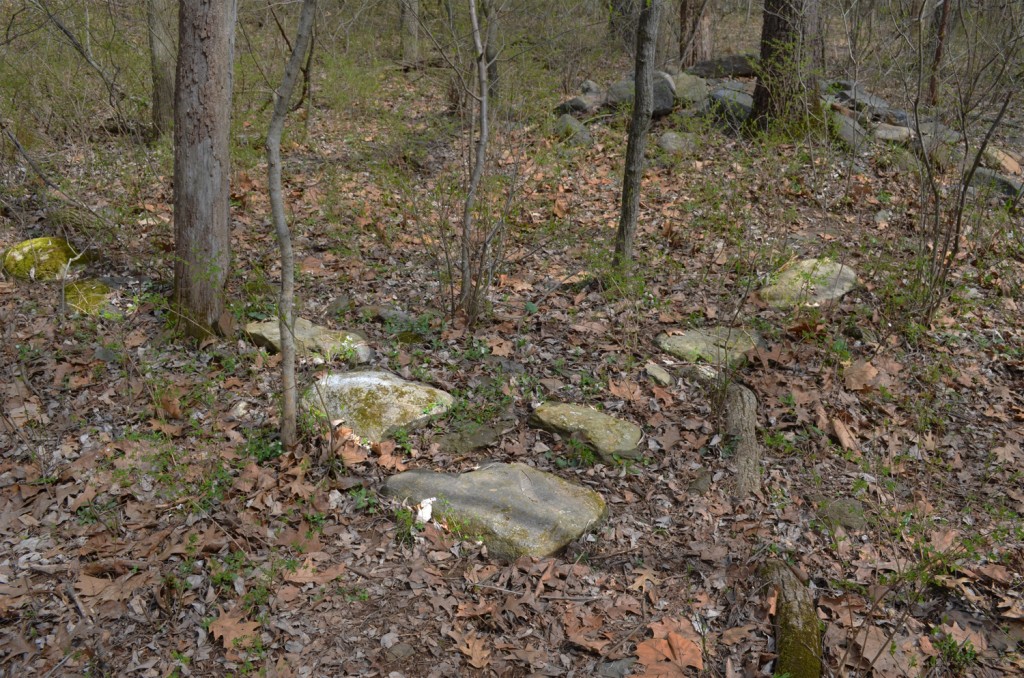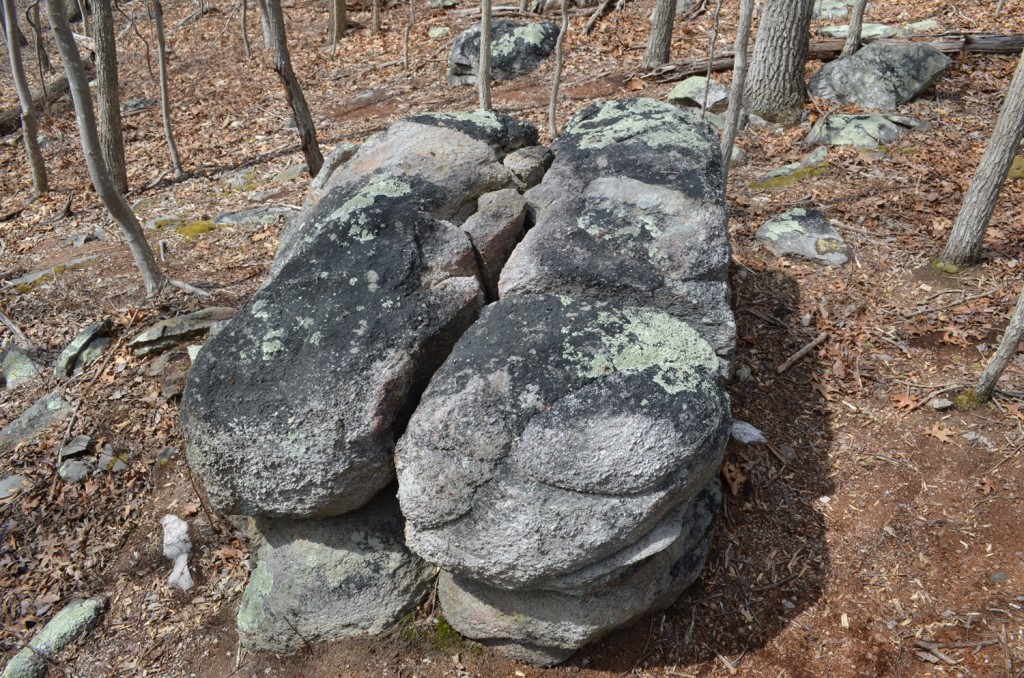| By Michael Dowling Original Article Posted Online at www.GrowingInterest.com. Signs of life linger on the land. Like shadows that grow long as the day slips into night, the stories of past generations spread across the landscape waiting for the blazing light of curiosity to coax them from the darkness. Perched on the slope of Mount Weather, an ancient timepiece sits quietly marking the passage of the sun. The stone day clock, built from boulders weighing thousands of pounds, overlooks what has now been identified as a sprawling solstice complex dating back thousands of years. Discovered on the property of Clarke County residents, Chris and René White, the site offers a window into the distant past where ancient people studied and developed the means to observe and measure the heavens. Since its discovery four years ago it has been meticulously researched and in 2011, Virginia’s Department of Historic Resources added it to the state’s inventory of archaeological sites. Yet despite its clear significance, a scientific indicator of an exact date had proven elusive. Now, a new milestone has been reached that fixes a date on the site’s last use. Using thermoluminescence dating techniques, an artifact discovered buried at the site has been dated back to 10,470 YBP (Years Before Present). This pinpoints the timeframe in which the site was last used but also means the elements constructed on the site are even older. While the age of the site makes it a rare find, what truly distinguishes it is the fact that the features are above ground. Archeologist Dr. Jack Hranicky who has been working on the site and developing the initial research report said, that the prehistoric site, “is of unique national significance and offers a glimpse into a highly developed culture living in Virginia over 12,000 years ago.” There are other Paleo-Indian era sites in Virginia, but the extant (above ground) nature of the site in Clarke County makes it a one of a kind historic site unique in all of North America. | "...a one of a kind historic site unique in all of North America." When discussing how he discovered the first signs of the site, Chris White says he always had an intrinsic understanding that the land was important. He and his wife Rene’ are both Native American descendants and for years, had dreamed of creating a retreat center on their property. As a first step Chris decided to build a “medicine wheel.” Used for rituals and teaching purposes, medicine wheels are comprised of stones laid in rings and patterns on the ground. Chris identified what appeared to be a suitable spot, but was surprised to find subtle hints that stones had already been laid in concentric circles. He had walked the site many times before and had even held the marriage ceremony to his wife René mere feet away from the spot, yet until he observed it through the lens of his Native American culture, the site remained hidden. Convinced that his find was not a natural occurrence, he contacted archeologist Dr. Jack Hranicky. After some initial questions and a site survey, Hranicky recognized it as a possible Paleo-Indian site and research began in earnest. For the next four years the site was studied, portions excavated and seasonal observations logged to document the existing constructs and their possible uses. It was during a very methodical excavation that the artifact that would shed light on the date of the site was revealed. In what Hranicky theorizes would have been a fire hearth at the center of the stone rings, a worked piece of Jasper was discovered. The stone had been chipped away and formed into a tool, and since Jasper is not found naturally in this area it must have been brought to the site by human hands. That stone implement was the puzzle piece that clearly proved that the site was last used more than 10,000 years ago. Through the millennia, the rough terrain has helped preserve the site. Even today, it protects its secrets as new discoveries continue to emerge. To date there over a dozen distinct features that have been documented including the massive day clock, petroglyph carvings in a stone shelter, and many solstice and seasonal observation stations. The future of the site remains fluid. The White’s had already established a Native American Church prior to their knowledge of the site so they see a natural connection and hope to grow the two together into a location for learning and spiritual growth. Preservation and interpretation will consume the foreseeable future. While the features of the site seem to all point to time and the observation of it’s passing, the greatest obstacle to understanding the site’s meaning and importance is the chasm of time that exists between its builders and our world. Perhaps as the site calls to visitors to slow the pace of their lives and minds, that chasm may close and offer a bridge to better understand this important discovery. Also read past articles from the Clarke Daily News: |
|
0 Comments
Your comment will be posted after it is approved.
Leave a Reply. |
Paleo News Room
for the site discovered by Chris (Comeswithclouds) White in 2010 Topics
All
History
August 2020
|



 RSS Feed
RSS Feed